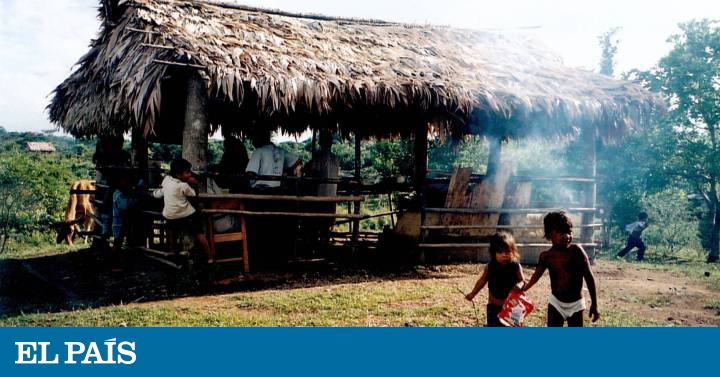The Mayangna people, who in their own language simply means "we", are the oldest to have settled in the territory of Nicaragua, and now inhabited, along with the misquito people, equally millenary, the tropical rainforest of Bosawás, neighboring the Caribbean Sea. This area was declared a biosphere reserve by Unesco in 1997, and covers 20,000 square kilometers, that is, the size of the Republic of El Salvador. Together with the Río Plátano de Honduras reserve, on the other side of the border, it represents the most important forest heritage in Central America, and the second largest lung in the hemisphere, after the Amazon.
Bosawás is a rich and vast laboratory of nature, where the flora and fauna of the north and south of the American continent converge. It contains 13% of the planet's species, more than 200 species between vertebrate and invertebrate animals, and about 300 plant species. A world heritage site.
Other articles of the author
The devil in the kitchen
Forms of immortality
The photos blowing the breeze
But what should be a buffer and containment zone, duly protected, has become rather a ruthless plundering theater: 42,000 hectares of forest are cleared each year for the illegal business of precious woods and the forced introduction of intensive livestock in lands that are not even suitable for pastures.
And while the agricultural frontier advances, pushed by the mestizo settlers from the Pacific coast, and the business of the sale and allocation of land is in the hands of mafias that also have to do with drug trafficking, the mayangnas and misquitos are expelled to the force of their natural habitat that are the forests and the rivers, their villages are set afire, and they fall assassinated.
When the Government of Chavez in Venezuela opened the opportunity to import Nicaraguan meat paid at preferential prices, the invasion of the lands of the reserve and the consequent dispatch accelerated.
There are mestizos who migrate to Bosawás because they are poor peasants, or arrive displaced from urban areas. But the network they fall into is formed by traffickers, intermediaries and adventurers, ready to kill.
In 2001, the Mayangnas were favored by a ruling of the Inter-American Court of Human Rights, the Awas-Tingi case, which granted the indigenous peoples of Bosawás the right to own a collective territory, and in 2008 the Government titled in its favor of 80,000 hectares.
But it was wet paper. In 2005, Elaina Rufos, a resident of one of those assaulted communities declared: “We now have problems because three groups of mestizos arrived. They were sent by the Government and they want to work there. They say they want to buy the forest and we don't want to. ”
What should be a buffer and containment zone, properly protected, has become rather a ruthless looting theater
The "settlers" use legal gimmicks against a community that has very little means to defend itself. "We have found settlers with public deeds that lawyers and notaries have done, but all that is false," says Mayangna leader Javier Hanzak.
On January 29 of this year, 80 men armed with war rifles, hunting rifles and machetes, from a group called “Kukalón”, assaulted the Mayan community of Alal, near the mining town of Bonanza. They killed six residents, and burned 16 homes, while women, children and the elderly ran to hide in the forest.
Ten of the villagers were missing, including representatives of the communal government, judges and rangers. "They killed our brothers with machetes, knives and bullets; many were left without housing and financial resources," says Byron Bucardo Miguel, one of the town's leaders. So far, only one of the aggressors has been captured by the police.
Gustavo Sebastián Lino, president of the Mayangna Sauni As territory, denounced, after the facts, that “our communities have been threatened, massacred and exploited. We have seen that the government has made decrees and actions that only remain on paper. One of them is the creation of the ecological battalion that was thought to give security to our communities and we have not seen their work. ”
To those who invade the indigenous territories of Bosawás, the world of mayangnas and misquitos, their ancestral beliefs, and their harmonious coexistence with nature, the sacred character that the jungle, trees and rivers have for them are completely alien , without which its existence as communities is not justified.
“We are an indigenous group that lives on the banks of small rivers, tributaries of the Prinzapolka, Coco and Wawa rivers. We are humble people and at the same time very proud… we live surrounded by living beings, both vegetable and animal, ”says a Mayangna, whose words I take from a Unesco document.
The Mayangna population is estimated at some 20,000 people, a minority who, if they do not have adequate political and social protection against vandalism, crime and predation, can hardly survive. And they only know about them when they are attacked, and when the attacks result in dead Indians, like now.
Faced with neglect and oblivion, the great lung that is Bosawás will be reduced in size at an accelerated pace, and with that vital space its inhabitants will also disappear, expelled or killed. And the "we" meaning the word mayangna will dissolve in nothing.
Sergio Ramírez is a writer and Cervantes 2017 award.
You can follow THE COUNTRY Opinion on Facebook, Twitter or subscribe here to the Newsletter.

